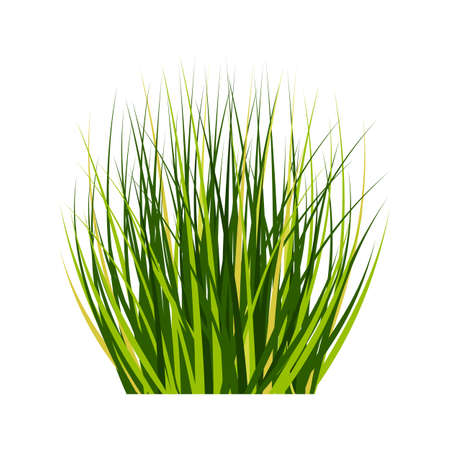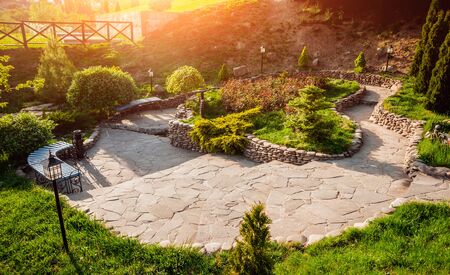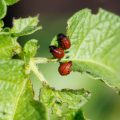Overwatering and Unsustainable Irrigation
One of the most common mistakes novice gardeners make with their lawns and turf is overwatering. While it might seem like more water ensures a greener lawn, excessive watering not only wastes precious resources but also harms the environment. Overwatering leads to runoff, soil erosion, and can even leach fertilizers and pesticides into local waterways, threatening both wildlife and community water quality. In many American communities—especially those facing drought or water restrictions—this practice is simply unsustainable.
Eco-Friendly Irrigation Practices
Adopting efficient irrigation systems is key to reducing your environmental footprint. Consider using drip irrigation or soaker hoses, which deliver water directly to the roots with minimal waste. Installing smart controllers that adjust watering schedules based on weather conditions can further conserve water. Watering early in the morning or late in the evening reduces evaporation, ensuring your lawn gets the moisture it needs without excess loss.
Prioritize Water Conservation
Lawns don’t need daily watering—in fact, infrequent deep watering encourages deeper root growth and a healthier turf ecosystem. Embrace native or drought-resistant grass varieties suited for your region; these require less water and are more resilient during dry spells. By prioritizing water conservation and sustainable practices, you can enjoy a vibrant lawn while protecting local ecosystems and promoting long-term environmental stewardship.
Improper Mowing Techniques
Mowing might seem straightforward, but for many novice gardeners in the U.S., improper mowing techniques are a major stumbling block to achieving a healthy, sustainable lawn. Let’s dive into three common mistakes: mowing too short (also known as scalping), using dull mower blades, and neglecting sustainable mowing habits that protect both your turf and the environment.
Scalping: The Perils of Mowing Too Short
Many beginners believe that cutting grass very short will reduce mowing frequency. In reality, scalping exposes soil, weakens grass roots, and invites weeds and pests. Healthy American lawns should generally be mowed to a height recommended for the specific grass type—usually between 2.5 to 4 inches.
| Grass Type | Recommended Height (inches) |
|---|---|
| Kentucky Bluegrass | 2.5–3.5 |
| Bermuda Grass | 1–2 |
| Tall Fescue | 3–4 |
| Zoysia Grass | 1–2.5 |
Dull Blades: Why Sharpness Matters
Mowing with dull blades tears grass instead of making clean cuts, leading to ragged edges that lose moisture quickly and become susceptible to disease. For a lush and resilient American lawn, sharpen your mower blades at least once every season or after every 20–25 uses.
Sustainable Mowing Habits for Eco-Friendly Lawns
Sustainable mowing is about more than appearance—it’s a practical way to support biodiversity and minimize your carbon footprint. Here are some eco-friendly tips:
- Mow less frequently: Allow grass to grow longer between cuts to strengthen root systems.
- Leave clippings: Mulching grass clippings returns valuable nutrients to the soil, reducing fertilizer needs.
- Opt for manual or electric mowers: These options cut down on emissions compared to traditional gas-powered models.
- Mow during cooler parts of the day: This helps prevent heat stress on your turf.
By adopting these proper mowing techniques, you’ll not only avoid common beginner pitfalls but also nurture a greener, more sustainable landscape that benefits your home and local ecosystem.

3. Chemical Overload: Fertilizers and Pesticides
One of the most common pitfalls for new lawn enthusiasts is the excessive use of synthetic fertilizers and pesticides. While these products promise quick results, overapplying them can do more harm than good, harming both your turf and the environment. Synthetic chemicals often leach into local waterways, polluting ecosystems and threatening wildlife. For a healthier, more sustainable lawn, consider organic alternatives such as compost-based fertilizers or natural pest control methods. These options not only nourish your grass but also support beneficial insects like bees and butterflies—key pollinators that are essential for healthy biodiversity. Prioritizing soil health is just as important; healthy soil teems with life, from earthworms to microbes, all working together to create resilient turf that requires fewer inputs. By embracing eco-friendly solutions and nurturing biodiversity, you’ll cultivate a lawn that’s both beautiful and environmentally responsible.
4. Ignoring Native and Drought-Resistant Grasses
One of the most common mistakes novice gardeners make is overlooking the value of native and drought-resistant grasses when planning their lawns. Many Americans are drawn to traditional, lush, high-maintenance turf varieties that require significant watering, fertilizing, and mowing. However, choosing grass types that are naturally adapted to your local climate can provide major environmental benefits while making lawn care more sustainable and less resource-intensive.
Why Choose Native and Drought-Resistant Grasses?
Native grasses have evolved alongside local weather patterns, pests, and soil conditions. This means they typically require less supplemental water, fewer chemical inputs, and minimal intervention to thrive. Drought-resistant species go a step further by maintaining their health and color even during periods of low rainfall—perfect for areas facing water restrictions or unpredictable weather due to climate change.
Environmental Benefits at a Glance
| Grass Type | Water Usage | Chemical Needs | Support for Pollinators |
|---|---|---|---|
| Bermuda (Drought-resistant) | Low | Minimal | Moderate |
| Buffalograss (Native to Midwest) | Very Low | Minimal | High |
| Kentucky Bluegrass (Traditional) | High | Frequent | Low |
Sustainable Choices Support Biodiversity
Selecting regionally appropriate grasses not only conserves water and reduces chemical runoff but also helps create habitats for pollinators like bees and butterflies. Lawns with diverse grass blends or flowering ground covers provide food sources and shelter, contributing to healthier local ecosystems.
How to Make the Switch?
- Consult local extension offices or native plant societies for recommended grass varieties.
- Consider overseeding existing lawns with native blends to gradually transition.
- Avoid monocultures; mix in clover or wildflowers for added resilience and pollinator support.
Ultimately, embracing native and drought-tolerant grasses is a practical step toward a greener lawn and a more sustainable future—one that saves time, money, and precious natural resources while supporting the wildlife that keeps our gardens thriving.
5. Neglecting Soil Health and Preparation
One of the most common mistakes novice gardeners make is overlooking the importance of soil health and proper lawn preparation. In the quest for a lush, green yard, it’s easy to focus solely on grass seed and watering schedules, but a truly resilient and eco-friendly lawn starts beneath the surface.
The Value of Regular Soil Testing
Before you plant or fertilize, take time to test your soil. Regular soil testing reveals vital information about pH levels and nutrient deficiencies, helping you tailor your approach for optimal grass growth. Over-fertilizing or using the wrong amendments can cause runoff pollution and waste resources. With a simple test, you empower yourself to make informed, sustainable choices that benefit both your turf and the environment.
Composting: Nature’s Way to Nourish
Instead of reaching for synthetic fertilizers, consider composting as an earth-friendly alternative. Compost adds organic matter back into your soil, improving its structure and moisture retention while supporting beneficial microorganisms. This natural process recycles yard clippings and kitchen scraps, reducing landfill waste and creating a closed-loop system right in your backyard—a win-win for both your lawn’s health and the planet.
Aeration for Strong Roots
Compacted soil is a silent enemy of healthy lawns, stifling root growth and making it harder for water and nutrients to reach where they’re needed most. Aeration—removing small plugs of soil from your turf—helps loosen compacted ground, encouraging deep roots and greater drought resistance. By scheduling aeration at least once a year, you set the stage for a more resilient, low-maintenance yard that supports biodiversity and withstands seasonal stresses.
Building Sustainable Lawn Foundations
Healthy soil isn’t just about greener grass; it’s about nurturing a living ecosystem that supports pollinators, conserves water, and sequesters carbon. By prioritizing regular soil testing, embracing composting practices, and aerating your lawn, you create a robust foundation for long-term success—one that reflects both American values of stewardship and the global push toward sustainability.
6. Unmindful Yard Waste Disposal
One of the most common mistakes novice gardeners make is disposing of yard waste—like grass clippings, leaves, and branches—without considering its environmental impact. In many American neighborhoods, it’s tempting to bag everything up and send it off to the landfill. However, this practice not only contributes to overflowing landfills but also wastes valuable organic matter that could benefit your lawn and garden.
Composting: Nature’s Recycling System
Instead of treating yard waste as trash, consider starting a compost pile or bin in your backyard. Composting is a sustainable way to break down organic material into nutrient-rich humus, which can be returned to your soil. It helps close the nutrient loop by recycling essential minerals and reducing the need for chemical fertilizers.
Mulching for Lawn Health
Another smart move is to mulch your lawn with grass clippings and shredded leaves. Mulching keeps moisture in the soil, suppresses weeds, and gradually adds nutrients back into your turf as the materials decompose. This eco-friendly approach mirrors natural systems and supports resilient, healthy lawns without extra waste.
Responsible Yard Waste Management
If you have more yard debris than you can compost or mulch, check with your local municipality for green waste pickup or drop-off programs. Many American cities offer these services to ensure organic waste is processed responsibly—often turning it into community compost or mulch available to residents. By making mindful choices about yard waste disposal, you help reduce landfill pressure and foster a greener neighborhood.


